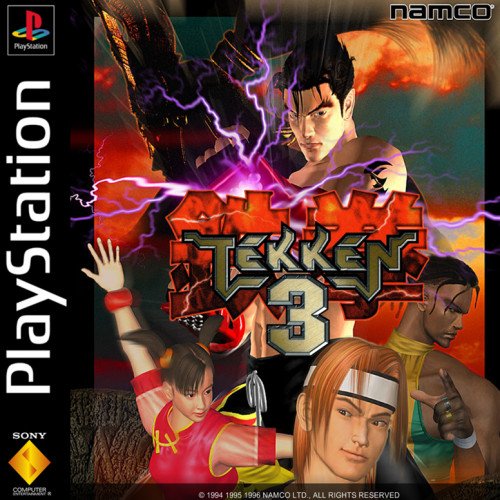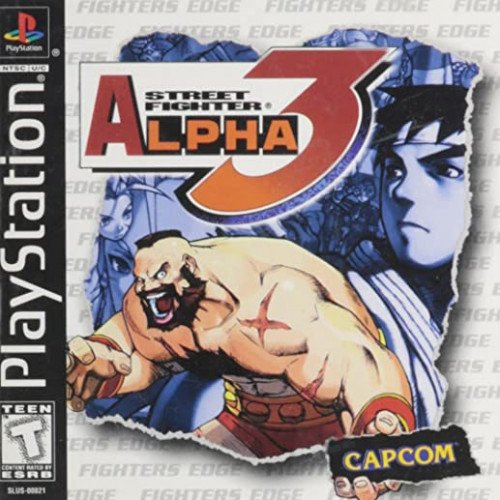The Best PS1 Games of All Time

Tekken 3
Tekken 3 (鉄拳3) is a fighting game, the third installment in the Tekken series. It was released in arcades in March 1997, and for the PlayStation in 1998. The original arcade version of the game was released in 2005 for the PlayStation 2 as part of Tekken 5's Arcade History mode. The game was re-released in 2018 as part of Sony's PlayStation Classic. Tekken 3 features a largely new cast of characters, including the debut of several now-staple characters such as Jin Kazama, Ling Xiaoyu, Bryan Fury, Eddy Gordo, and Hwoarang, with a total of twenty-three characters. The home version includes a new beat 'em up mode called Tekken Force, and the bonus Tekken Ball mode. Tekken 3 has been cited as one of the greatest video games of all time. With more than 8 million copies sold worldwide, Tekken 3 is the fourth best-selling PlayStation game. It was followed by Tekken Tag Tournament, a non-canon installment in 1999 in arcades and in 2000 for the PlayStation 2. The direct sequel, Tekken 4 was released in arcades and on the PlayStation 2 in 2001 and 2002, respectively. Tekken 3 maintains the same core fighting system and concept as its predecessors.[3] Three-dimensional movement is insignificant in previous Tekken games (aside from some characters having unique sidesteps and dodging maneuvers), but Tekken 3 adds emphasis on the third axis by allowing characters to sidestep in or out of the background.[4] Fighters now jump more reasonable heights than in the previous games, making them less overwhelming and putting more use to sidestep dodges, as jumping can no longer dodge every ground attack. New improvements include quicker recoveries from knockdowns, more escapes from tackles and stuns, more moves with juggling enabled, and newly created combo throws.
Statistics for this Xoptio

Street Fighter Alpha 3
Street Fighter Alpha 3[a] is a 2D competitive fighting game originally released by Capcom for the arcade in 1998. It is the third and final installment in the Street Fighter Alpha sub-series, which serves as a prequel to Street Fighter II, and ran on the same CP System II hardware as previous Alpha games. The game was produced after the Street Fighter III sub-series has started, being released after 2nd Impact, but before 3rd Strike. Alpha 3 further expanded the playable fighter roster from Street Fighter Alpha 2 and added new features such as selectable fighting styles called "isms". Alpha 3 has also been released on a variety of home platforms starting with the PlayStation port in 1998, which added an exclusive World Tour mode and brought back even more characters, with further versions on the Sega Saturn, Dreamcast, Game Boy Advance and PlayStation Portable. The game was also included in the Street Fighter Alpha Anthology, as well as the Street Fighter 30th Anniversary Collection. Street Fighter Alpha 3 discards the "Manual" and "Auto" modes from the previous Alpha games and instead offers three different playing styles known as "isms" for the player to choose from. The standard playing style, A-ism (or Z-ism in Japan), is based on the previous Alpha games, in which the player has a three-level Super Combo gauge with access to several Super Combo moves. X-ism is a simple style based on Super Street Fighter II Turbo (the term "X-ism" being a reference to that game's Japanese title, Super Street Fighter II X), in which the player has a single-level Super Combo gauge and access to a single but powerful Super Combo move. The third style, V-ism (or "variable" style), is a unique style that allows the player to perform custom combos similar to the ones in Street Fighter Alpha 2, but cannot use Super Combos. In X-ism, the player cannot air-block nor perform Alpha Counters, and can only use 1 Super Combo move in its powerful Level 3 version. To activate V-ism's Super Combo, the player has to press both kick and punch of the same strength. X-ism has the highest attack power but least defence, A-ism has more attack power than V-ism and a similar level of defence. All three modes have variations of movesets for each character, adding considerable depth to the gameplay. In addition, there are hidden modes that add handicaps to the player as well as benefits (for example, Classic mode, which prevents the use of Super Combos but also makes the character unable to be knocked in the air and juggled).